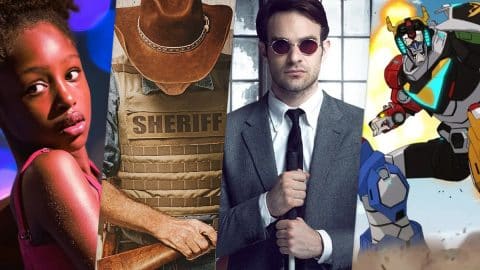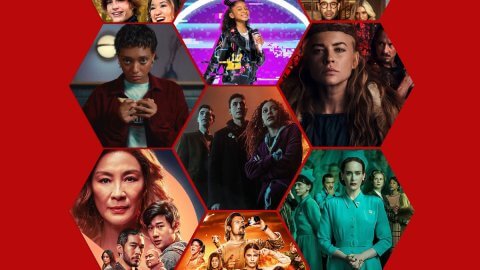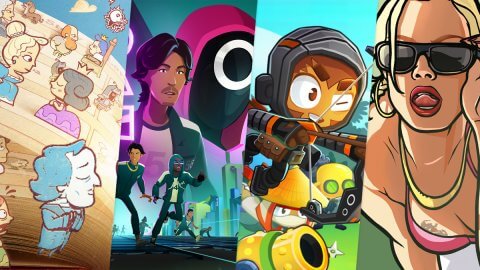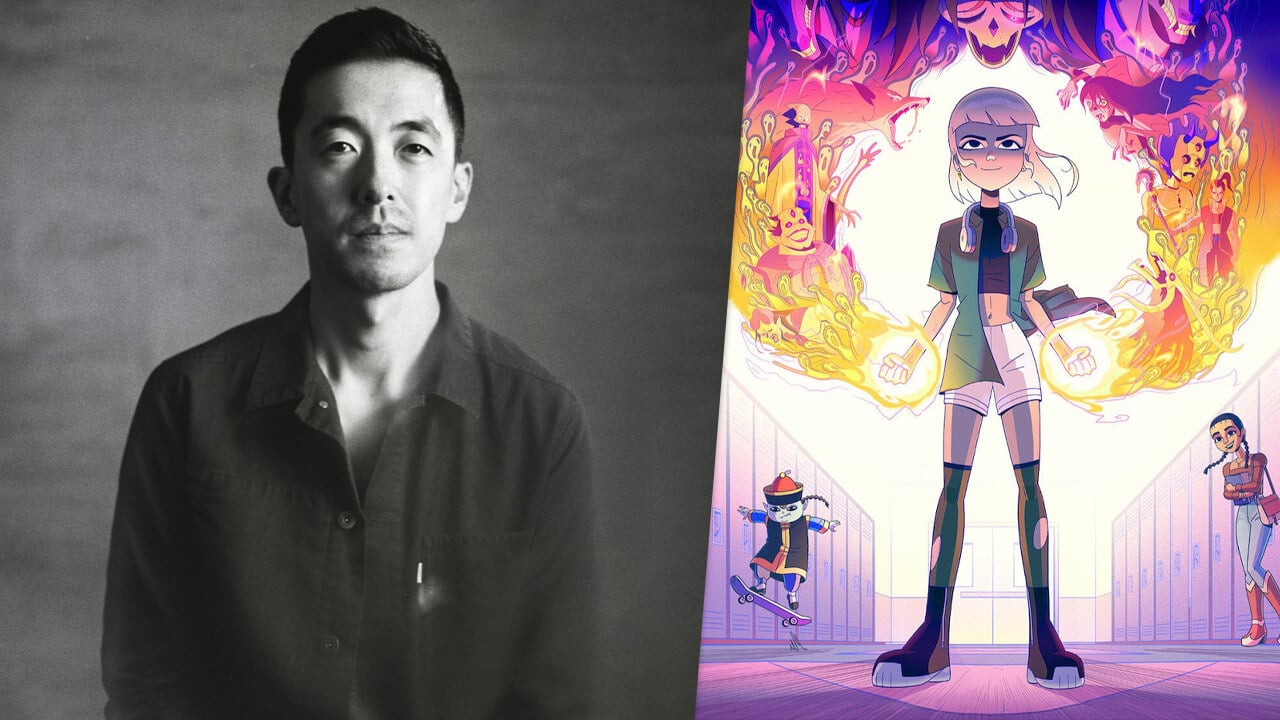
Picture: Brian H. Kim, the composer of Jentry Chau vs. The Underworld – Netflix
We recently had the pleasure of discussing the score of Netflix’s latest animated series, Jentry Chau vs. the Underworld, with composer Brian H. Kim.
Jentry Chau vs. the Underworld is the second Netflix Original Brian has worked on after composing the score for the romantic coming-of-age series My Life with the Walter Boys. He will also return to score the anticipated second season.
Brian H. Kim has also composed scores for television shows such as Disney’s Star vs. the Forces of Evil, NBC’s Abby’s, Amazon Prime’s Panic, and an episode of Ryan Murphy’s American Horror Stories.
Jentry Chau, a Chinese-American teen living in a small Texas town, who finds out a demon king is hunting her for the supernatural powers she’s been working her whole life to repress. With the help of her weapons expert great-aunt and a millennia-old jiangshi (Chinese hopping vampire), Jentry must now fight an entire underworld’s worth of monsters while balancing the horrors of high school.
Jacob: How did you first become involved with Jentry Chau vs. the World?
Brian: It’s crazy how I got involved because I didn’t know anyone on the project to start. But, between 2015 and 2019, I worked on a Disney show, Star vs. the Forces of Evil and there was a music executive there at the time, who then moved over to Netflix around the time the show finished. Then, during peak COVID, she called me when studios were getting things in the cooker. She told me there was a show coming down the pipeline that she thought I was suited for, but it wouldn’t happen for a while, and she wanted to put it on my radar.
Then, around a year and a half later, or around the very beginning of 2022, I finally got the phone call. They were starting to demo songwriters, so I demoed some songwriting first, which is not usually how I do things. Previously, I had been hired as a composer first, but for this one, they wanted songs first as they wanted songs written before the animation.
They gave me a show bible, which had artwork, character bios, and information about the mythology the show was going to explore. It also talked about the overall aesthetic and how it was influenced by K-dramas, K-pop, Japanese horror. But, it felt like it was speaking directly to me as these were all things that I was a huge fan of. So, as soon as I got it, I immediately thought I understood what this show was about. Then, I wrote a song demo based on the section of a script they gave me from the second episode. I did nothing else for about six weeks, as I really wanted to nail this down. I was ecstatic when they responded positively to it because I like writing K-pop and writing songs for television and film, which is something that I wanted to do more of.
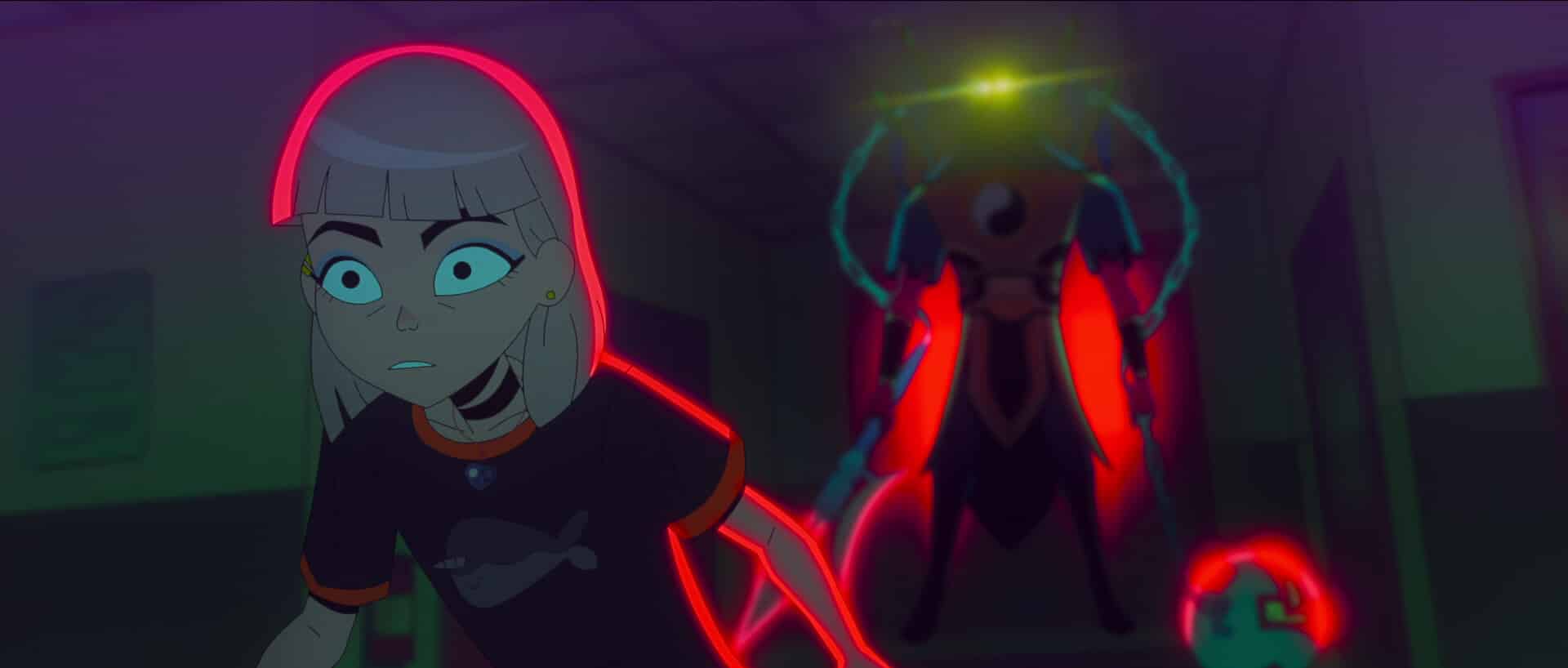
Cr. COURTESY OF NETFLIX © 2024
Jacob: From what I could gather, there were one or two licensed songs while watching the show, but for the rest, I thought to myself that I needed to ask you if those songs were bespoke.
Brian: I want to say there are more than two for the licensed songs, but it makes me happy you couldn’t tell which ones were bespoke and which were licensed; they all fit together because that was something we wanted to achieve. There are 12 original songs in the show, and episode six had two of those original songs.
A couple of episodes didn’t have any, but most of the episodes have an original song in them. So that was something we really wanted to focus on because the songs were written before animation started so that they could animate in time to the songs. So a lot of the action sequences will have key moments that happen exactly like when a hook drops or exactly when a verse starts.
In the second episode, there are some light flickers are timed out to the beats, which I always thought was really cool the first time I saw it. Episode six has a huge explosion inside the Big Tex statue, and that was one of the earlier songs that I wrote for the show. It’s called “See,” and when I got the animation for that, and how they timed out the explosion and the build-up like she’s running up the side of Big Tex as the chorus starts to ramp up, then it hits the chorus right when the hook drops. That was really satisfying to see.
So yeah, seeing the animation come together with the songs that I wrote from a couple of years prior was really exciting.
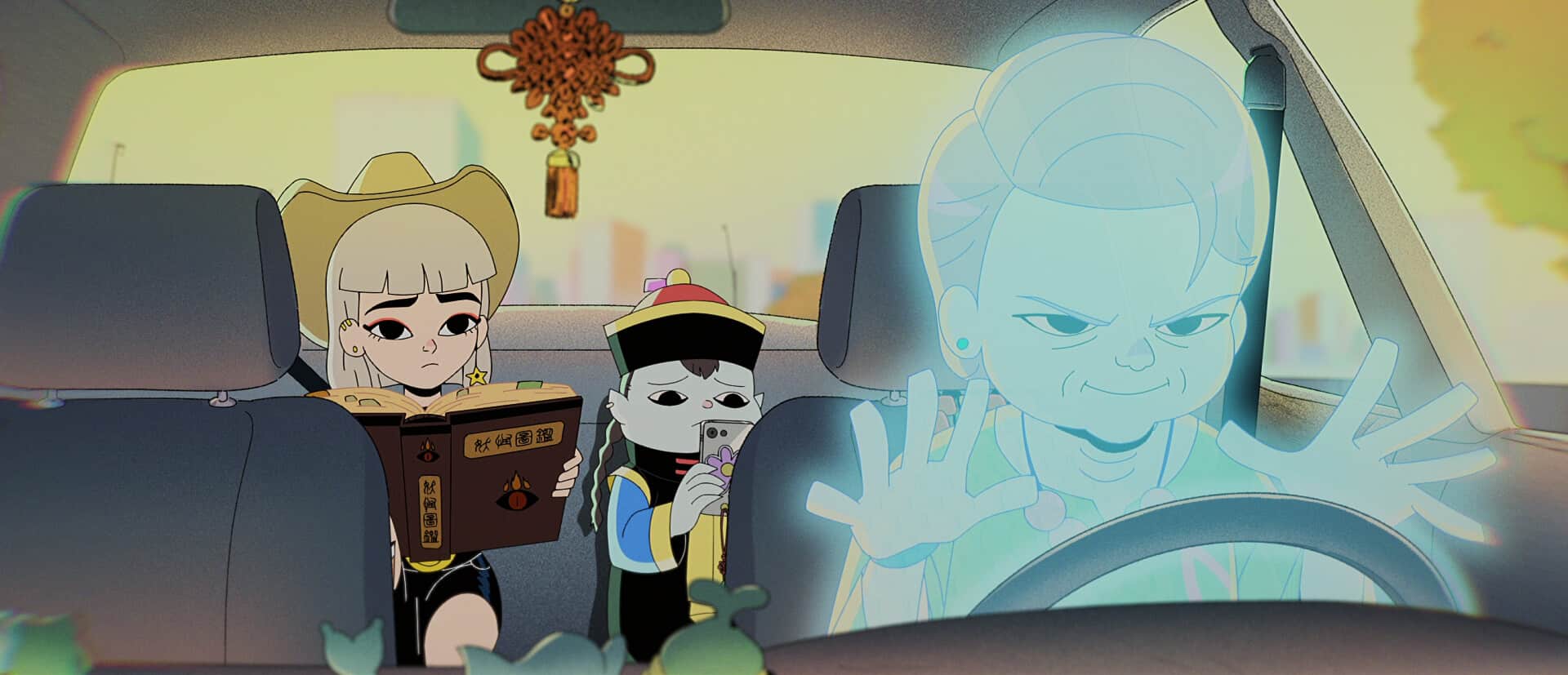
Cr. COURTESY OF NETFLIX © 2024
Jacob: I think, as the viewer, when the music does match what you’re seeing on screen, it’s a lot more satisfying and fun to watch.
Brian: Oh, totally, I think so too. I was really excited to get to do that, and it felt like a music video sometimes. Take Riot Games, they make these great songs before their world championships and release a video. But the video is always like a storyline that going along to the song, and things are timed out to that. So that was huge inspiration for me, just being a fan of that music, and all those videos, so as I was writing the songs, I was hoping the animation would line up that way.
There was always a bit of push and pull because I would write a version of the song to the script, which would then get sent off to animation. Then, nine months later, I would see the animation, and there were always some things that weren’t 100% locked to what I wanted them to be.
So then I would change the timing of the verse a little bit, and I would change the timing of the chorus just to hit like a beat earlier; I was short in a measure here and there, to get it like really tight when I really wanted those things to land. And then that would get, and then I would score, so I have the score and the final version of the song. We always know how everything was flowing into one another. Then, we would record with a recording artist at the very end of the process.
Then, they would sometimes want to make some rhythmic changes. We would always need to judge that against the picture. Like, is that new phrase that the artist is bringing still going to line up with a picture? And, so, that was a really cool creative back and forth with the artist to being like, I want them to bring their flow, I want them to bring what makes them unique as an artist, that’s what I want them to be on the show. And marrying that to what’s happening on screen and the storytelling that we’re doing, it was a cool juggling act.
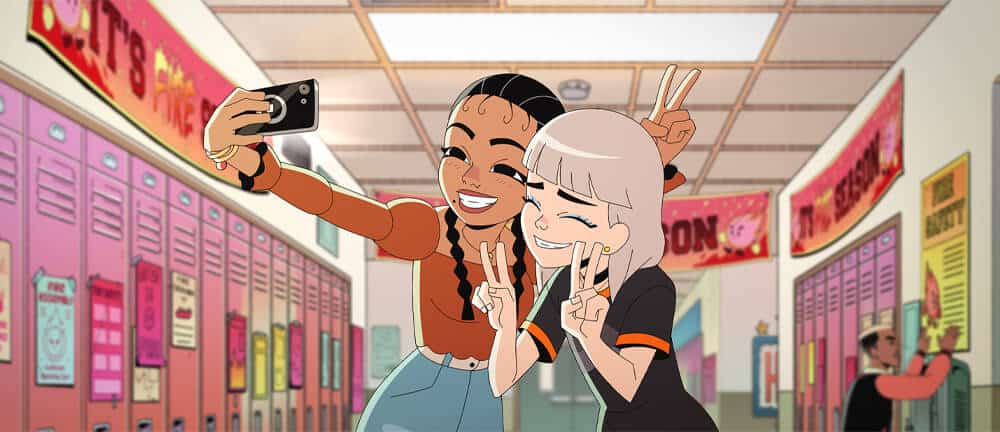
Cr. COURTESY OF NETFLIX © 2024
Jacob: A great collaborative effort going on there!
Brian: Oh, totally. Yeah, there are so many departments and so many people contributing to the story that’s being told.
Jacob: It certainly sounds like you were given the freedom to experiment.
Brian: Yeah, that was really fun with Netflix. They just gave me the ingredients, the scripts, the show, the animatics, and later on, the animation. They would say cook the dish you want to cook, which was really freeing. I loved how supportive they were and how much they believed in the project, and that they weren’t going to rest on their laurels either.
I wrote a couple of songs where I had to start over again, just because the vibe I thought was going to work was not what Echo [Wu] had in mind, or maybe not what Titmouse or Netflix had in mind. So everybody was really open and honest. And nobody was too precious about what they were doing. Everybody just wanted to make the best thing possible.
But getting that freedom is cool. In episode 11, they’re in Duyu, and there’s this crazy song called Maniacal that’s playing while Jentry is sort of having this takeover moment with a Mogui that she’s trying to make a deal with. It gets very anime-inspired in there, and all of the backgrounds are very MC Escher-inspired, so nothing is really lining up correctly, and everything is constantly in motion. So for that one, I threw the kitchen sink at them and told them I’m going to be changing tempo like three times, I’m going to be changing keys, and I’m going to have sounds going backward! Like, Mahler symphonies will inspire the brass, and the percussion will be inspired by hyperpop and that sort of thing.
That one came together really well as Netflix responded well to it, and because we all had Alice Longyu Gao in mind while we were making the song as somebody who would bring a very specific tone and voice and color to it. So when she was interested in the song too, that all really come together.
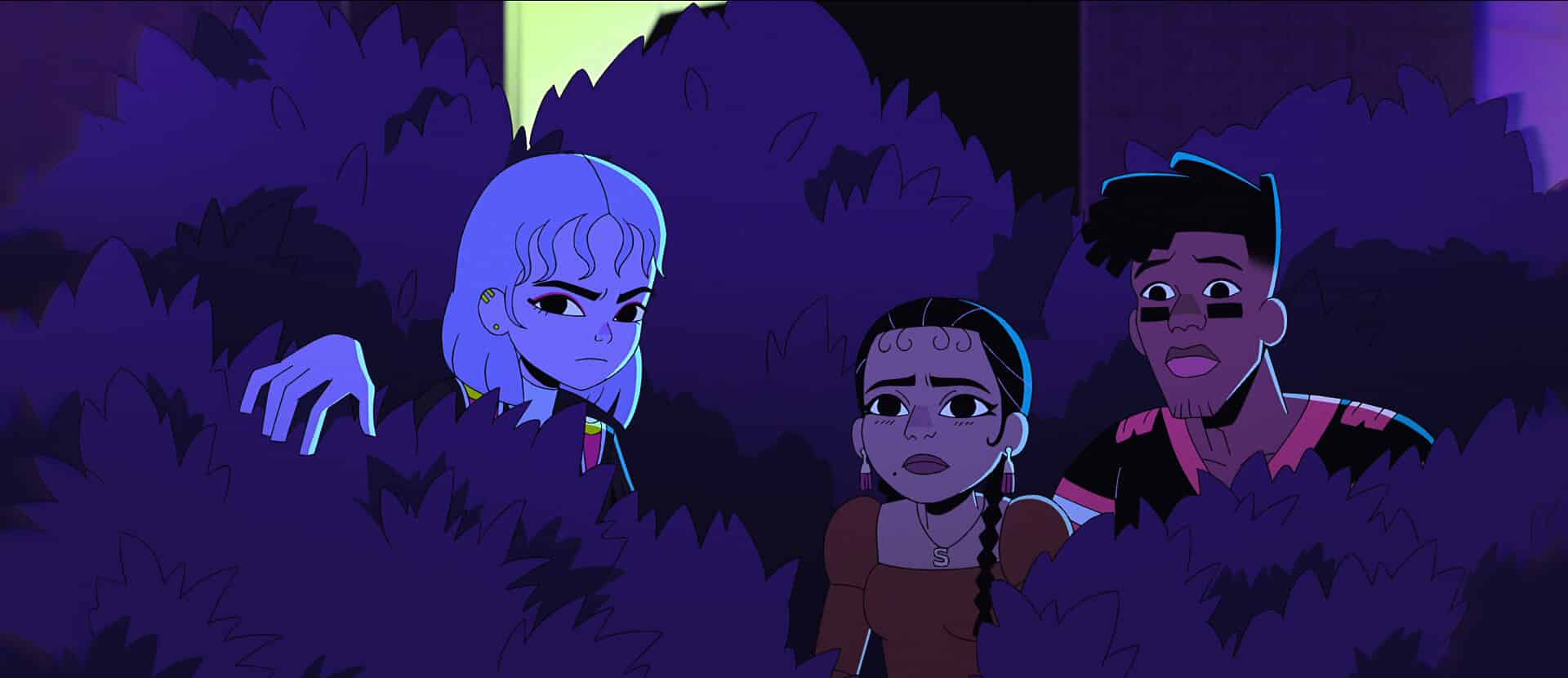
Cr. COURTESY OF NETFLIX © 2024
Jacob: Would you say your score is a fusion of genres?
Brian: It is. It kind of feels like a bit of Japanese horror like The Ring, and a bit of anime like Joe Hisaishi, who scored the Hayao Miyazaki films, was a big inspiration. A bit of K-pop, a bit of trap, a bit of hip hop, some of that popular music edge where a lot of stuff has a modern beat behind it. And then, when we were figuring out what would unify everything, we decided to make it a very synth-based score as something that could speak to all the genres we were talking about. And so yeah, it is a fusion of all those things, like modern electronic scores, K-pop, anime, horror, and sort of everything thrown together.
It made it so that I could jump from one scene into a song, into another scene, into an emotional beat, maybe into another song after that, and feel like everything was speaking to one another. I always wanted it to feel like the score couldn’t exist without the songs, and the songs couldn’t exist without the score, that everything was of a piece. I mentioned being inspired by the way that Riot Games tells stories in their music videos. Still, I was also very much inspired by composers like Labyrinth, who does Euphoria, or Alan Menken, who does a lot of Disney movies in that, you know, Labyrinth writes both the song and the score for Euphoria, and Alan Menken, when he does Disney movies, he’s both the songwriter and the score composer. And to me, that’s a very special alchemy that happens when one composer has all those pieces in mind. They’re constantly just pulling from different parts of the show, or different parts of the film, or different parts of the song, or score, and just using all those elements at will. And I think that made it so that when I was working on one part of the show, I could keep in mind another part of the show and make sure they were always speaking to one another.
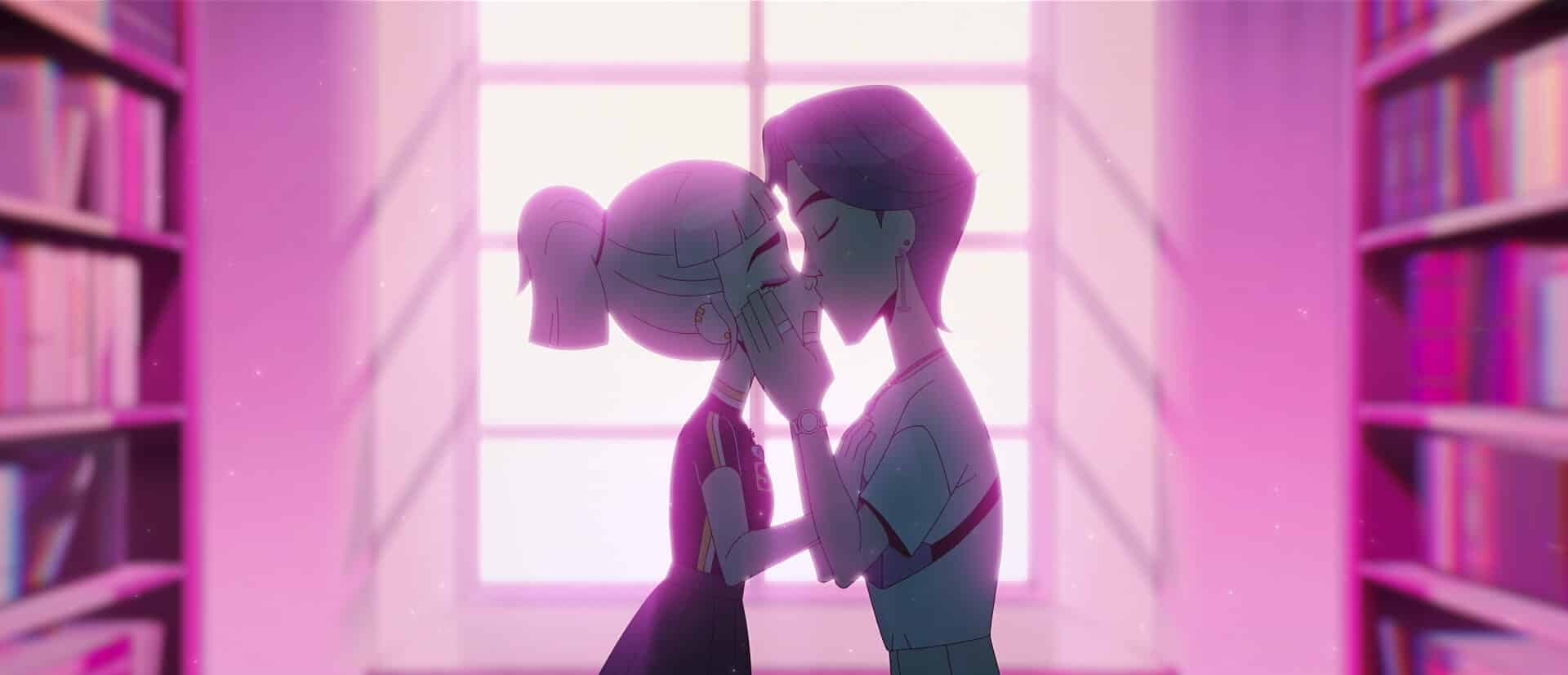
Cr. COURTESY OF NETFLIX © 2024
Jacob: It’s almost like being ambidextrous with your mind but in a musical sense.
Brian: A little bit, right? I appreciated that Netflix allowed me to make changes to all the episodes at a time and that we did mixes sequentially on the episodes, and then at the very end, we opened up everything again to drop in all the recording artists who recorded the songs at the very end of the process, but also just to make sure everything was exactly what we wanted it to be. So there were a couple of score cues that I changed right at the last minute, some timings I changed, and some synth sounds I changed just to make sure that everything was super unified.
There were always 20 different spinning plates in my head for like three years while I was working on this show, and it’s kind of crazy now that I don’t have any work left to do on it. I just get to do fun things. Not that working on it wasn’t fun, but the extracurricular things of talking to you, looking at social media assets, and getting the soundtrack ready for release. It’s going to exist in the world. Everybody’s going to be able to see it. I’m just trying to enjoy the run-up to that now.
Jacob: And, with everyone being able to see it, will we be able to hear it on Spotify?
Brian: Oh yeah, they are planning a pretty big soundtrack rollout. Throughout the whole process, Netflix was very serious about the music, and knew that the music was going to be a big part of the show, both in the storytelling and presentation of the show.
So, there’s going to be a double-length album release on Spotify—basically a disc one and a disc two. The first disc will have all the original songs, and disc 2 will have 30 minutes of the original score that I’ve picked my favorite cues from and what I thought would be a good listening experience.
There’s also going to be a double vinyl release, and you’ll be able to pre-order the vinyl when the show premieres, but then the vinyl will go officially on sale, I think, in January or February. But I’ve seen some of the early artwork for the vinyl.
It’s being done by Mondo, and so they were really very creative in the artwork. When you open the jacket, there’s a certain interactive element to the way that vinyl comes out of the sleeve and the way that the jacket looks. It’s all really, really cool.
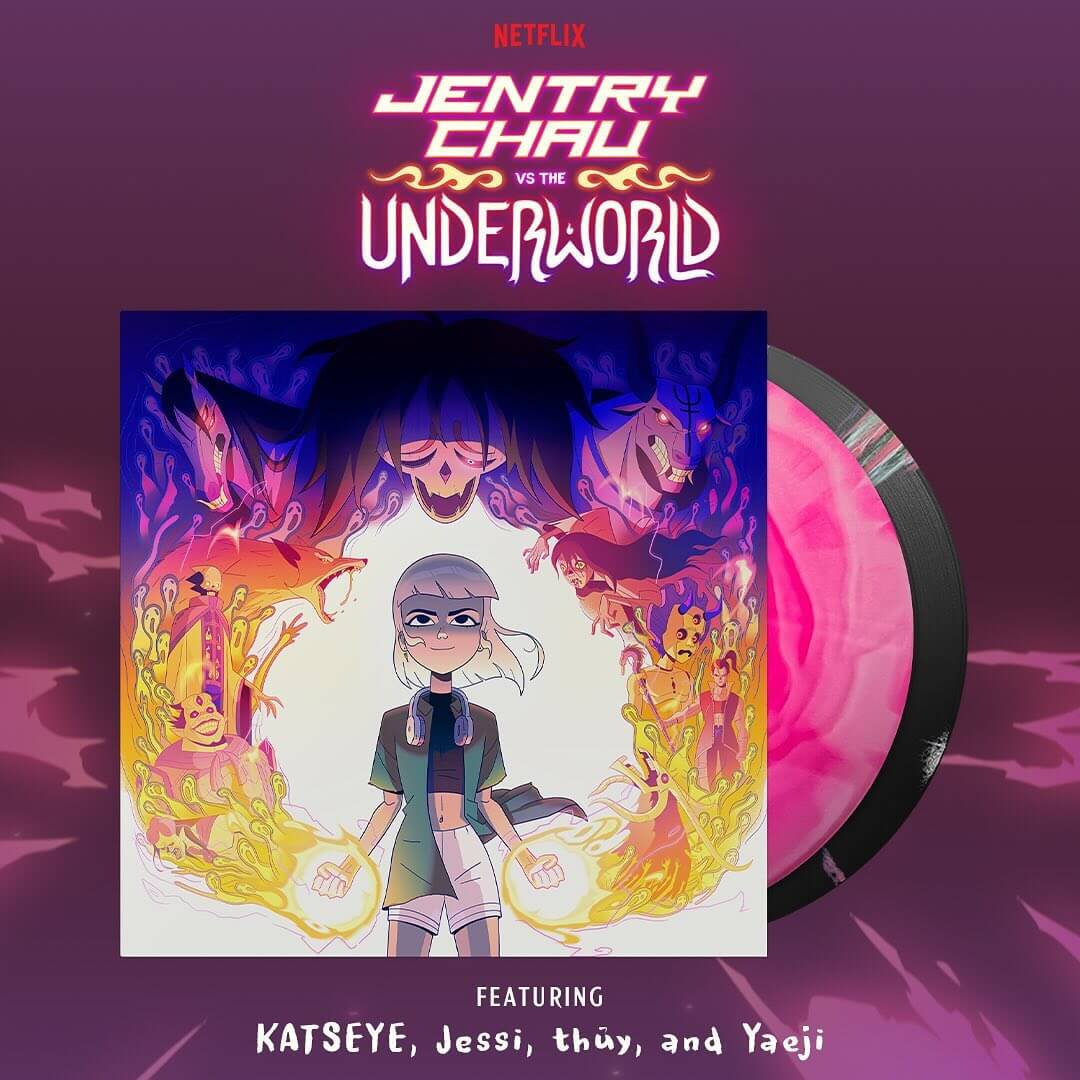
Jacob: With everything over for you with Jentry Chau vs. the Underworld, it’s going to be quite the genre switch working on the second season of My Life with the Walter Boys.
Brian: It is, yeah. It’s really nice, I really like living in the world of My Life with the Walter Boys. It’s very warm and emotional, and everything feels much smaller in a way than it does on Jentry, where Jentryis like your dimension-hopping; she’s battling monsters, she has pyrotechnics coming out of her hands, and that sort of thing. Walter Boys is very much a family story about teenagers who are going through very real-world things.
So the template on a technical level I had when I was writing for Jentry was much more elaborate than the template that I have when I’m writing for Walter Boys because the music for Walter Boys is much more lo-fi. There’s a decent amount of synth work in it too, because we wanted to sound sort of like a modern country folk album sort of thing. But you know, it’s a lot of guitar playing, which I really did not get to do very much on Jentry and really enjoy. And it’s a lot of warm emotional cues, from front to back. And I miss the characters, I haven’t worked with them in like a year and a half, and so coming back to that after, you know, some wild crazy stuff on Jentry is a really nice feeling.
Jacob: I know the fans are very much looking forward to the second season.
Brian: I know, and they’re going to have a lot of nice surprises for season two. I think fans are going to be really, really… what’s the word? Thirsty for the changes and for the characters that are going to happen.
Are you watching Jentry Chau on Netflix? Let us know in the comments below!

